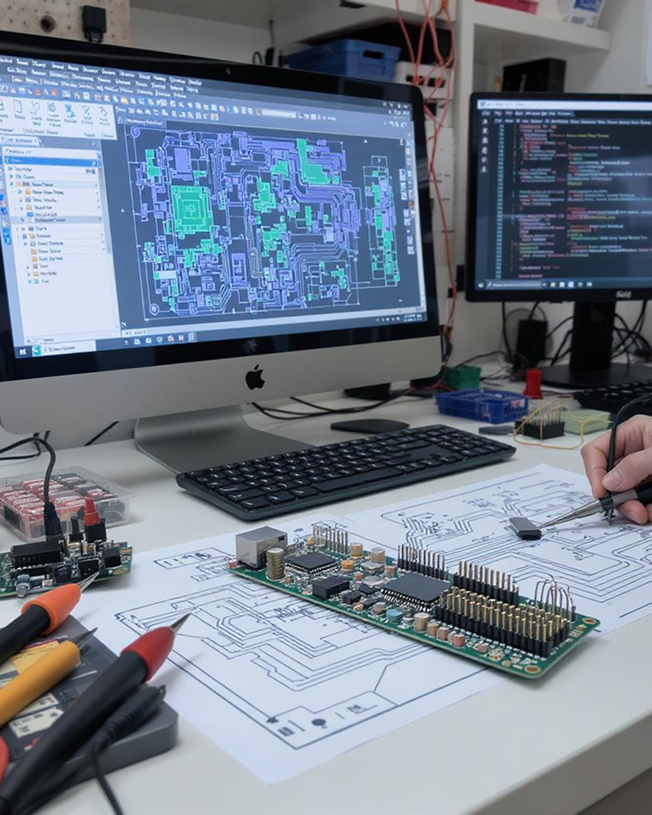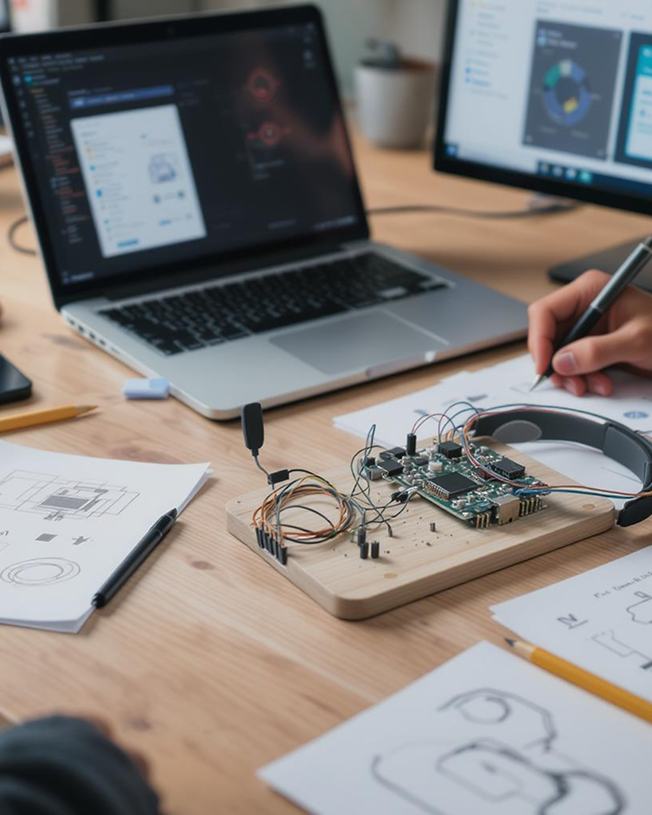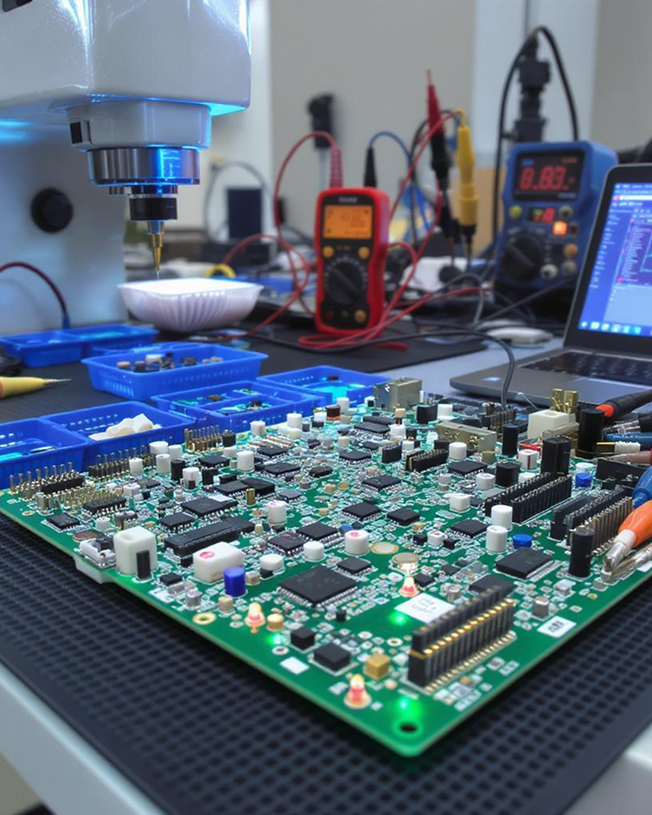Develop cutting-edge embedded hardware solutions that set your IoT products apart from the competition with our expert design services. We specialize in custom hardware development for B2B applications, delivering industrial-grade designs, advanced embedded systems, wireless solutions, and more.
Get a QuoteWe cover every aspect of IoT development to ensure your business operates smarter, faster, and more efficiently.
Customized hardware architecture solutions ensure seamless connectivity, optimal performance, and energy efficiency. Our process covers everything from component selection and schematic design to PCB layout and prototyping.
Unlock innovation with our PCB Design Service—high-performance, reliable, and optimized for your unique needs. From your concept, we deliver precision-engineered PCBs that power your next big idea.
We facilitate a seamless transition to mass production by optimizing the manufacturing process, enhancing product designs for scalability, and ensuring rigorous quality checks, ensuring a successful launch with a reliable and market-ready product.



We follow a step by step process, from planning to deployment and optimization. To ensure our deliverables are scalable and secure IoT solutions that fit your needs.
In this phase, we work closely with clients to define key specifications, carefully selecting hardware components that best suit the embedded system design. We develop a robust architecture that ensures optimal performance, efficiency, and scalability.
Once the components are selected, a detailed schematic is created, outlining their connections and interactions. This process includes designing the PCB layout to optimize signal routing and minimize interference, ensuring reliable performance.
After finalizing your board, seamlessly scale up to PCB production. With our partner factories boasting a production capacity of 8 Million ㎡ per year, allows us to meet your large-scale production needs while maintaining the highest standards of quality and consistency.
We ensure a smooth transition to mass production by optimizing the manufacturing process, refining product designs for scalability, and ensuring rigorous quality checks before launching the product.
Embedded hardware development involves designing and building custom electronic circuits, including microcontrollers, sensors, and communication modules, to create standalone hardware or IoT-integrated devices.
Embedded hardware refers to the physical components that form the foundation of an embedded system. It includes microcontrollers, processors, sensors, memory, power management circuits, and communication modules designed to perform dedicated functions within a device.
Custom IoT Product Development involves designing a complete end-to-end IoT solution, including hardware, firmware, cloud integration, and mobile or web applications while Embedded Hardware Development focuses only on the physical electronic components of an embedded system.
Embedded hardware refers to the physical components (PCBs, microcontrollers, power management, sensors), while embedded software (firmware) runs on the hardware, controlling its functionality and communication.
Yes, firmware/software development is optional. However, if you prefer to develop the firmware in-house, we can deliver the hardware with all necessary documentation for integration. If required, we can also assist with firmware development to ensure seamless hardware functionality.
We design single-layer, multi-layer and high-speed optimized for different applications, ensuring efficient signal integrity and power management.
We follow Design for Manufacturability (DFM) and Design for Assembly (DFA) principles, ensuring that the hardware is cost-effective, production-friendly, and reliable for large-scale deployment.
The timeline depends on complexity, component availability, and design iterations, typically ranging from 4 to 12 weeks from concept to fabrication.
Yes, we can analyze, optimize, and enhance existing hardware designs for better performance, power efficiency, and manufacturability.
You can contact us with your project requirements, and our team will guide you through the development process, ensuring a tailored and efficient solution for your needs.